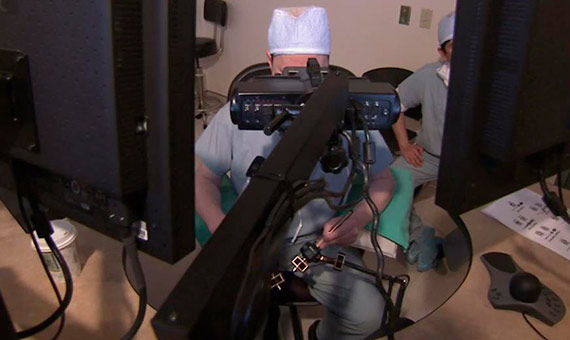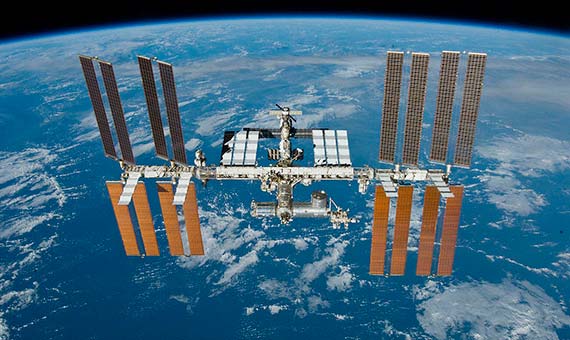On September 2, 1993, US Vice-President Al Gore and Russian Prime Minister Viktor Chernomyrdin ended the Cold War space race by joining forces and investments to build the International Space Station (ISS). The first component of the station was put into orbit in 1998 and two years later the first crew took up residence there. Since then, it has been continuously inhabited and has become the only permanent laboratory in microgravity conditions, with research that has resulted in important scientific advances that can improve life on Earth and propose solutions to global problems.
Interactive Timeline: History of the ISS
[+] Full screen
“The construction of the IEE has brought together two of the world’s major powers in a cooperative effort that has provided a sense of hope for what the future holds for humanity,” said Steven Freeland, a professor of international law. The possibility of conducting experiments outside the terrestrial gravitational field opened up a range of scientific possibilities that would not be possible on Earth. “This is a great tool to acquire knowledge at the limits of human resistance and find out how to improve the performance of humans in space, something essential if humanity really does intend to leave the planet someday,” adds José María Quintana, an expert in Space Science.
The science that is carried out on board the ISS is interdisciplinary and includes fields as diverse as microbiology, fundamental physics, human biology, astronomy and meteorology, among others. These are some examples of the progress that has been made.
Treatments for cancer
NASA scientists have investigated a microencapsulation electrostatic processing system (MEPS) that has demonstrated that under microgravity conditions, microcapsules with more efficient properties can be produced to administer the drugs used in chemotherapy and allow a more effective treatment for cancer patients.
Research at the ISS also inspired the creation of the Image Guided Automated Robot (IGAR), a surgical instrument designed by the Canadian Space Agency that can be used in patients with breast cancer. The device accurately identifies the size and location of a tumour with a magnetic resonance imaging machine and can help surgeons make more accurate movements during biopsies.
A surgical robotic arm
Derived from the Canadarm, a robotic arm developed by the Canada Space Agency for the NASA space shuttle, NeuroArm was born, a surgical instrument capable of performing delicate brain surgeries within a tomograph with far more precision than any human hand.

In 2008, NeuroArm removed an egg-shaped tumour from the brain of the American patient Paige Nickason, and since then at least 35 people have successfully undergone surgeries performed by that device, according to results published in the Journal of Neurosurgery.
New drugs
Understanding the shape of the proteins of the human body is critical to developing medicines. These macromolecules are responsible for a huge range of biological functions and crystallographic studies are essential to know their structure.
For this we have to let proteins form crystals from their “natural state”—which is to be dissolved in aqueous liquids, such as in the interior of our cells. The problem is that the formation of crystals within a fluid on the Earth is inhibited by the effect of gravity and the sedimentation of the denser particles in the bottom of the liquid vessel.
In a microgravity environment, however, that does not happen and the crystals can grow to larger sizes than on the planet’s surface, allowing an easier analysis of their microstructure. Protein crystals grown in the ISS are used in the development of new drugs for diseases such as muscular dystrophy and cancer.
Treatment of osteoporosis
The effects of the spatial environment on the human body over a long period of time have allowed us to study the loss of bone density leading to osteoporosis.
Research on microgravity has enabled the creation of a mitigation technology, which involves the use of resistive exercise devices that mitigate the bone and muscle loss of astronauts. That technology, along with other studies on proper nutrition and the use of medications, can lead to improvements in the treatment of osteoporosis, a disease that affects millions of people around the world.
Research in space with mice in orbit has also made it possible to create Prolia, a pharmaceutical product designed to treat those who suffer from it.

Natural Disaster Control
The ISS make a complete journey around the Earth every 91 minutes and travels over more than 90% of the populated areas each day. The ISERV (Environmental Research and Visualization System), an on-board imaging system—which was replaced in 2012 by similar yet more powerful software—collected up to 1,000 images per day. Many of them have been used to monitor natural disasters in developing countries and to encourage a more rapid response from emergency services to fires, floods, or volcanic eruptions.
A spectrometer looking for dark matter
To learn more about dark matter, the Alpha Magnetic Spectrometer (AMS) was created, a magnet capable of measuring galactic cosmic rays. The detector has collected more than 30 million particles arriving from deep space and has measured their energies and the direction from which they come.
The results, published in the journal Physical Review Letters, indicate that antimatter particles do not come only from the centre or from outside the galaxy, suggesting that they are a result of the destruction of dark matter.
Although many questions on the subject remain unanswered, AMS can obtain relevant information to help us to learn about the nature of dark matter and dark energy and thus reveal some of the mysteries of the Universe.
Comments on this publication